"What we’re trying to find is a business with a wide and long-lasting moat around it, protecting an economic castle with an honest lord in charge.”
Warren Buffett1
A moat, in Warren Buffett’s sense, is a competitive advantage that is hard for other companies to copy. Coca-Cola’s moat is its ubiquitous brand. Apple’s moat is its integrated software and hardware. Facebook’s moat is its billions of users. If you want to create a profitable business you must have some kind of moat, otherwise you’ll end up in a race to the bottom.
The same applies to photographers. To be successful, they must have a style or an obsession that is difficult to imitate. Most photography—professional or otherwise—looks generic. Perhaps it is the technology or client expectations, but it’s rare to see work that is both unique and hard to reproduce. I look at their photos and can guess how their images were made. But with LaChapelle, I barely know where to start. One could try and copy his aesthetic, but it’s going to take money, imagination, connections, and desire to get anywhere close.
Let’s take a look at some of his moats.
The Set Design Moat
Before he even gets out his camera, LaChapelle and his team often build fantastical backdrops in the studio. There is an incredible largesse in these scenes that shows an aristocratic disdain for money, befitting luxury brands that want to stand out in fashion magazines. If the clothes are not enough, maybe the elaborate backdrop will be? If I tried to build such a set, it would be so bad as to make Billy Coull’s Willy Wonka farce look like Disney World.
The Imaginative Moat
LaChapelle’s work is not just about displays of wealth. His tableaux reveal a tendency for spectacle and imagination. Though the work is often vulgar, he is outrageously free in how he pulls ideas into his work. It is a very nineties phenomenon: a time when you could ransack the world’s culture without worrying about being accused of cultural appropriation.
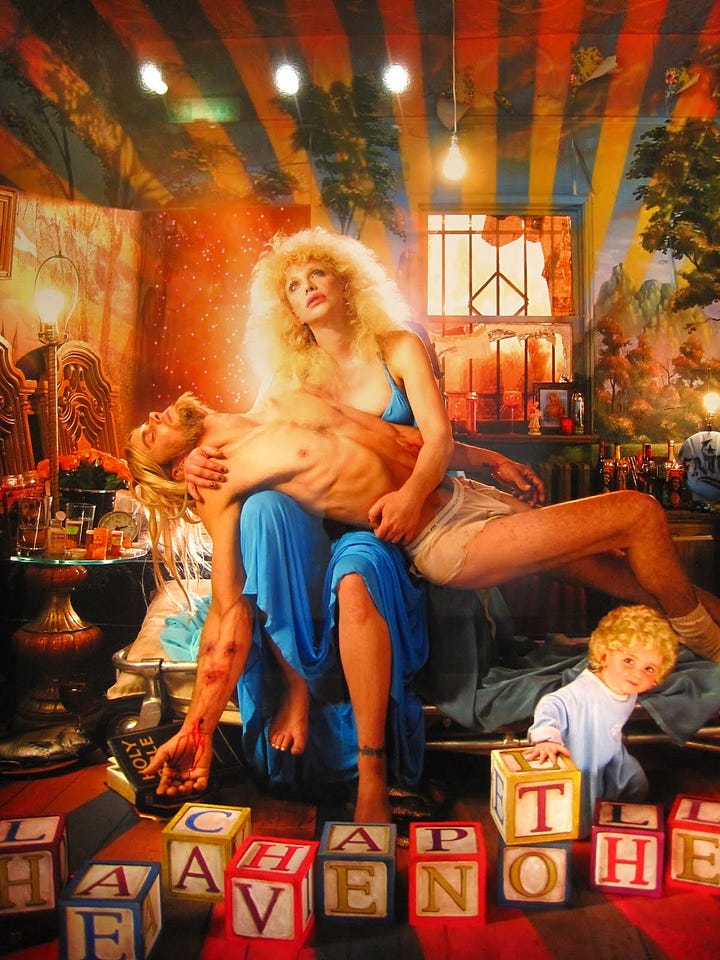
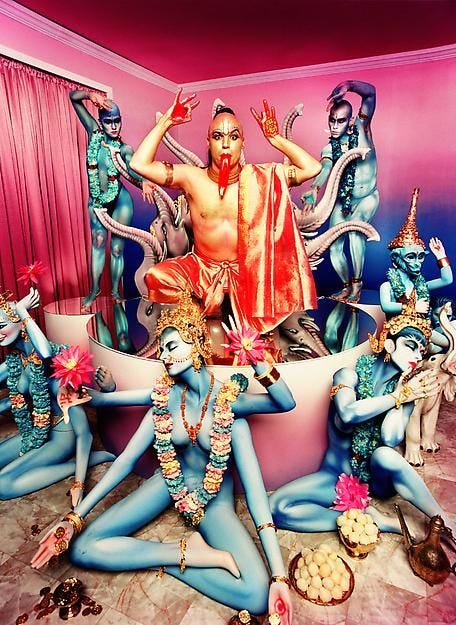
LaChapelle is a postmodern photographer, scavenging ideas from high and low culture. This cover photo for Travis Scott incorporates the Moloch from Fritz Lang’s Metropolis with seventies kitsch to make an image that ambivalently condemns and celebrates contemporary civilization.
The Celebrity Moat
As a 17-year-old, LaChapelle was discovered by Andy Warhol, who commissioned him to take portraits for Interview Magazine. “Do whatever you want,” Warhol told him. “Just make sure everybody looks good." This was the auspicious start that gave LaChapelle access to the world of celebrity.
Film, fashion, and magazines all rely on the maintenance of aura. By proving himself capable of creating iconic images, LaChapelle became one of the most sought-after photographers of the nineties. He didn’t need to ask celebrities to pose, they were desperate to work with him.
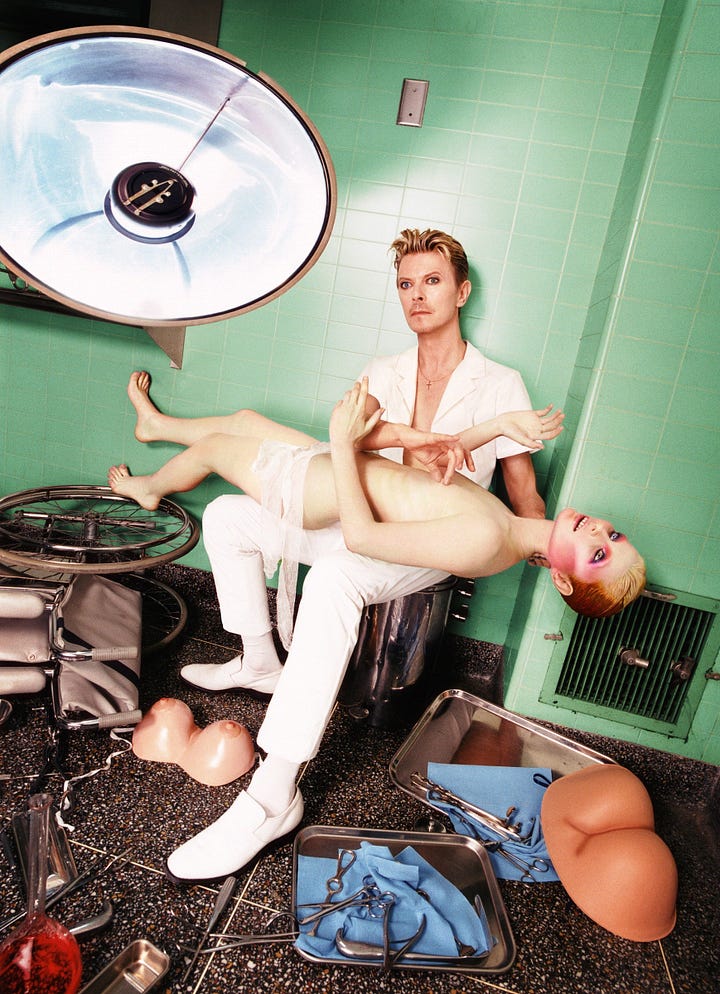

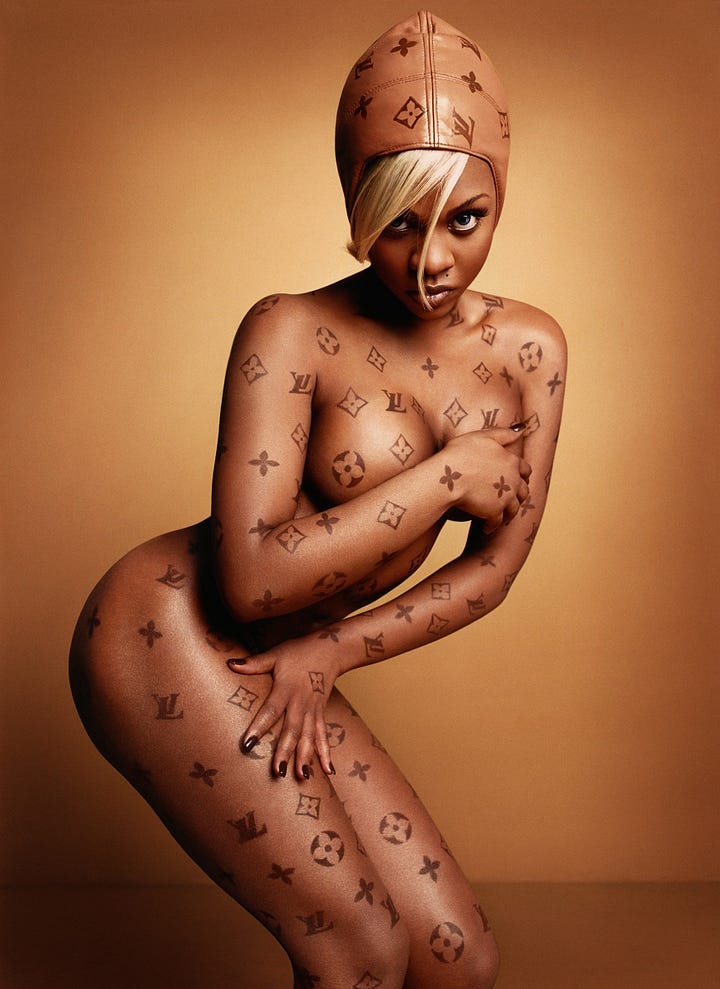

Even now, when such maximalist aesthetics are less fashionable, LaChapelle remains a go-to photographer to help establish the star quality of singers like Dua Lipa and Doja Cat. I can’t imagine how I would build up an address book like his, but if any celebrities are reading, do get in touch.
The Perfection Moat
“A lot of people think it's all done on the computer, but it's not. I'm a photographer, not a computer person. In fact, it’s important to me that these scenarios existed somewhere, for some period of time, even if it was only for an hour.”
David LaChapelle, LaChapelle Land
LaChapelle is the pre-eminent artist of the Photoshop era, embracing software to touch up and enhance his images. Yet, weirdly, his photographs don’t look manipulated because the entire aesthetic is hyperreal. We are so deep in fantasy that the airbrushing doesn’t matter. Instead, he uses Photoshop to remove any imperfections that might wake you from the dream.
The Lurid Moat
Plastic surgery, porno vulgarity, extreme gender presentation—all these themes come up in his work. Some have accused him of “destroying the culture” before retreating to the jungle to escape the excesses he created.
It’s true that his work is lurid and grotesque. We look at it because it is excessive. I wonder if looking at it is like living inside a sweetshop, rotting our teeth and ruining our health. Just because something is compelling, doesn’t mean it is beautiful. What remains indisputable, though, is that he took it much further than anyone else, creating a moat that few can challenge.
What’s your moat?
Most of the photographers I’ve looked at in this series have a wide moat, often containing crocodiles. For Nan Goldin, it is her extreme intimacy. For Chris Killip, it is the investment of time in the community. For Robert Capa, it is getting closer to war than anyone else. There is no one quite like LaChapelle, and that’s fine—one is enough. But how difficult would it be for someone to copy what you do? Is it time to start digging?
The photographs in this article are used for criticism and review under the Fair Dealing provision of UK Copyright Law. All rights to the image remain with the photographer/copyright holder. This use does not claim any rights to the original work and is not for commercial purposes.







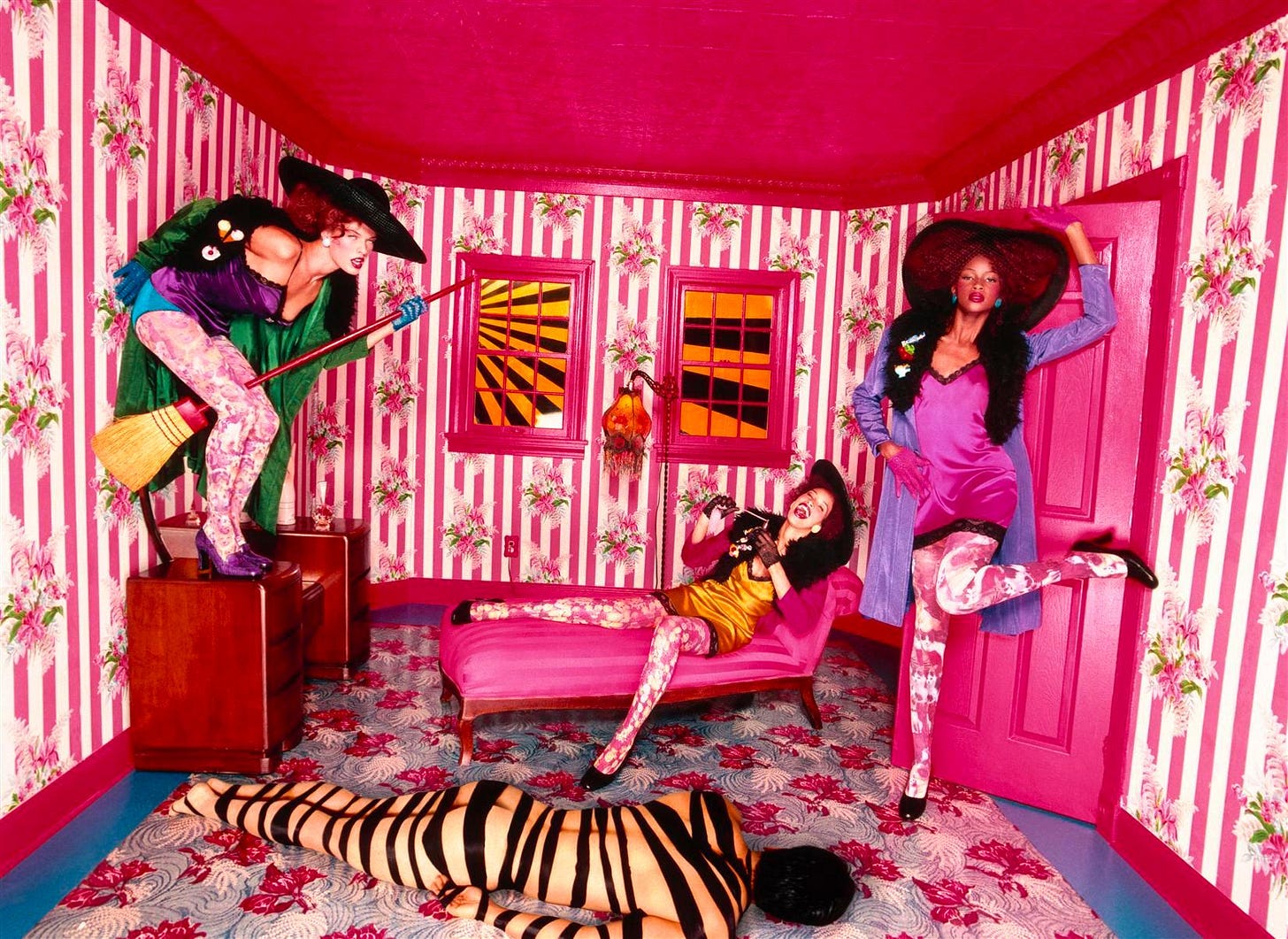




Great series, and a wonderful summary of what makes LaChapelle unique. Thank you.
Never seen photos like this before!